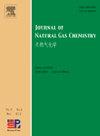Cobalt phthalocyanine-graphene complex for electro-catalytic oxidation of dopamine
引用次数: 39
Abstract
Cobalt phthalocyanine-graphene (CoPc-Gr) complex are fabricated through π-π interaction of each components, with CoPc adsorbed/inserted on/in the graphene sheets. The obtained complex could be used in the electro-chemical detection of various medicines. CoPc-Gr modified glassy electrode shows excellent response to the electro-oxidation of dopamine (DA) and ascorbic acid (AA), much better than those of CoPc, graphene oxide (GrO) or graphene (Gr) modified electrode. Significantly, the detection of dopamine is a diffusion-controlled process, highly selective, and has a low detection limit and broad linear range.
酞菁钴-石墨烯复合物电催化氧化多巴胺
酞菁钴-石墨烯(CoPc- gr)配合物通过各组分的π-π相互作用制备,CoPc被吸附/插入到石墨烯片上。该配合物可用于多种药物的电化学检测。CoPc-Gr修饰的玻璃电极对多巴胺(DA)和抗坏血酸(AA)的电氧化反应良好,远优于CoPc、氧化石墨烯(GrO)或石墨烯(Gr)修饰的电极。值得注意的是,多巴胺的检测是一个扩散控制的过程,具有高选择性,检测限低,线性范围宽。
本文章由计算机程序翻译,如有差异,请以英文原文为准。
求助全文
约1分钟内获得全文
求助全文

 求助内容:
求助内容: 应助结果提醒方式:
应助结果提醒方式:


